68: Playing cards in glass
My wife and I have recently commissioned a unique pair of stained glass windows for our home.
My wife and I live in a quirky house, parts of which were a pub. Although it ceased to be an alehouse in 1914 (the outbreak of World War I plus the loss of the river-based wherry trade to the railways), the old drinking room is our kitchen with hatches to serve beer through. Originally these would have been hinged and had, according to those who knew it before we did, pink glass panels in them. These were allegedly broken by a missile hurled by one of the previous owners, so when we bought the property they were just openings in the wooden screen between the hallway and the kitchen. For many years we wondered whether we could put at least something in them, preferably glass again.
We have recently been lucky enough to get to know a glass artist, Neil Harvey, who also lives in Bungay and was really taken with the old playing cards I showed him. He could see lots of potential from his particular artistic perspective. In the end we agreed that it would be a great idea to put glass panels in two of the three openings with a playing card theme. We chose the king and queen of spades from De La Rue’s redrawn single-figure courts of the 1840s (D3) and, since there was plenty of room, some appropriate Owen Jones back designs as a lower panel on each. One of these is the design for Prince Albert of 1851 (under the king) and the other that for Queen Victoria. These are the windows as seen from the kitchen.

Above: stained glass by Neil Harvey.
The picture below is the view from the hall into the kitchen.

They complement the hand painted small glass panes from the 19th century above them, the very bottom of which can be seen at the top of the picture.

He also produced a small three-dimensional model as a test piece, which could be produced as a glass ornament. Since the picture was taken, I've added a coloured print of the queen to the back of the glass.
Right: the three-dimensional model.
There is a tenuous link between Bungay, where we live, and the Queen of Spades. Judging by some of the details in the Queen of Hearts as drawn by Tenniel for Lewis Carroll's Alice in Wonderland, he used the De La Rue Queen of spades as a model. The equivalent Queen of Hearts from the same court set is rather too delicate-looking for the Carroll character. After the first print of the book by Oxford University Press was rejected by both Tenniel and Carroll, all further copies of the original version of the book were printed by Clays. Although they were based in London at the time, they transferred their business operation to Bungay in Suffolk and so many thousands of copies of Alice were printed here.

By Ken Lodge
Member since May 14, 2012
I'm Ken Lodge and have been collecting playing cards since I was about eighteen months old (1945). I am also a trained academic, so I can observe and analyze reasonably well. I've applied these analytical techniques over a long period of time to the study of playing cards and have managed to assemble a large amount of information about them, especially those of the standard English pattern. About Ken Lodge →
Trending Articles
Popular articles from the past 28 days
Related Articles
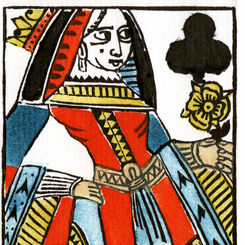
Woodblock and Stencil Queen of Clubs
A limited edition art print of the Queen of Clubs 1984 woodblock joker.
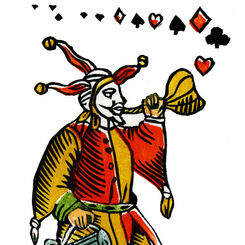
Woodblock and Stencil Joker
A limited edition art print of the 1984 woodblock joker.
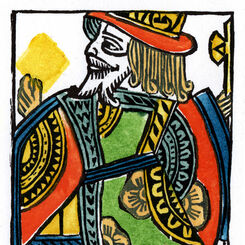
Woodblock and Stencil King of Diamonds
A limited edition art print of the King of Diamonds 1984 woodblock joker.
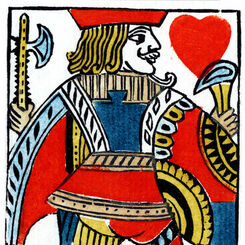
Woodblock and Stencil Jack of Hearts
A limited edition art print of the Jack of Hearts 1984 woodblock joker.
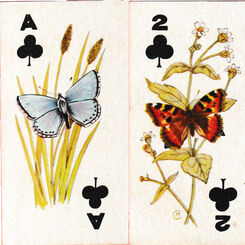
Sweetule Natural History cards
Small cards featuring natural history subjects, given away with packets of sweet cigarettes.
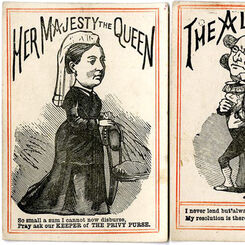
Lend Me Five Shillings
or “Her Majesty’s Privy Purse” - a merry round-the-table game published by D. Ogilvy.
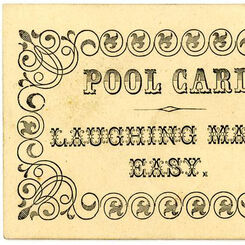
Laughing Made Easy
a Victorian card game published by D. Ogilvy.
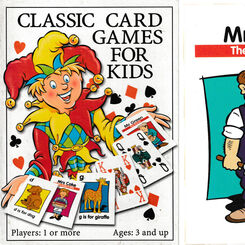
Classic Card Games for Kids
A boxed set of playing cards, Happy Families and an alphabet pack with rules for 22 games.
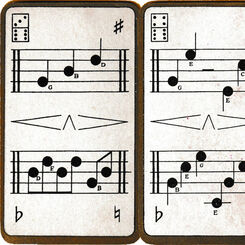
So-Lah – A Game of Music
An early 20th century domino-type musical card game by Goodall.
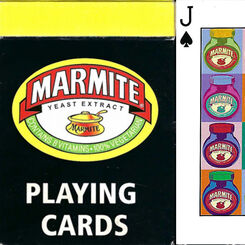
Marmite
Fifty-Four images celebrating a UK savoury spread, that has been around one hundred and twenty two y...
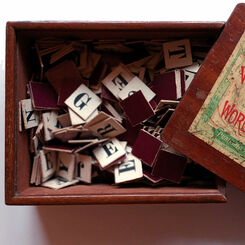
Word Making and Word Taking
How crossword and spelling games became popular.
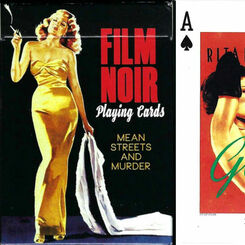
Film Noir
A deck of 55 cards, celebrating hard boiled heroes, wise-cracking women, mean streets, guns and gums...
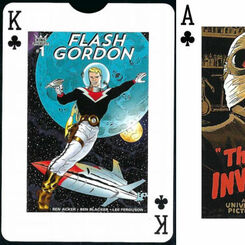
Science Fiction
A deck of 55 cards, celebrating a time when Science Fiction truly was, Science Fiction.
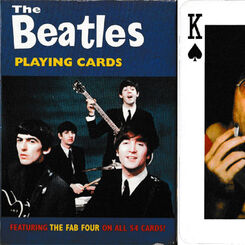
The Beatles playing cards
Two packs featuring photos of The Beatles issued by the same publisher in 2004 and 2005.
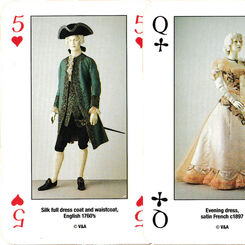
Costume Playing Cards
Four centuries of costumes from the Costume Court at the Victoria and Albert Museum.
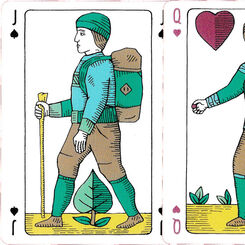
Commoners playing cards
Created by Ian Cumpstey dedicated to the common land and the countryside.
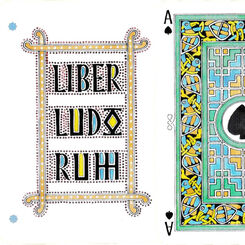
Liber Ludorum
Liber Ludorum playing cards created by Ian Cumpstey in the insular style, United Kingdom, 2019.
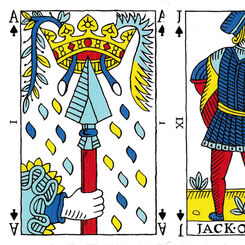
Pike and Clover playing cards
Pike and Clover playing cards created by Ian Cumpstey, Cumbria, UK, 2018.
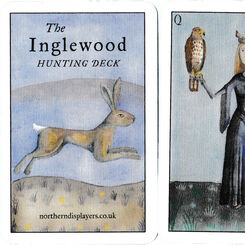
Inglewood Hunting Deck
Inglewood Hunting Deck created by Ian Cumpstey, United Kingdom, 2023.

Pin-Ups
A deck of 55 cards celebrating a golden age of cheeky, naughty, bold and curvy ladies in film.
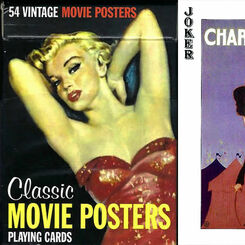
Classic Movie Posters
A deck of 55 cards presenting vintage classic movies and their stars.
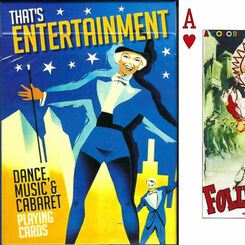
That’s Entertainment
A deck of 55 cards celebrating 20th Century vaudeville, musicals and cabaret.
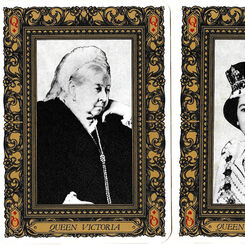
British Monarchs
Commemorating the royal wedding of Charles, Prince of Wales to Lady Diana Spencer on the 29th

Rock & Pop Legends
Stunning photos of a selection of US and UK music artists.
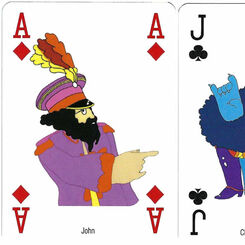
The Beatles • Yellow Submarine
A colourful deck celebrating the 1968 animated feature film based on the Lennon/McCartney song of th...
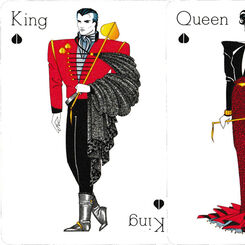
Paco Lobo
Highly original and striking designs by Paco Lobo for the fashion house of the same name.
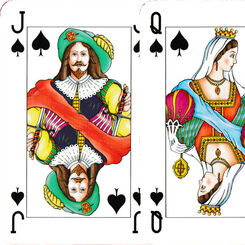
Dutch Court playing cards
Games & Print Services’ version of the Dutch pattern.
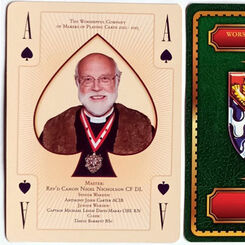
Past Masters’ Association Presentation Pack
The Worshipful Company of Makers of Playing Cards Past Masters’ Association Presentation Pack, 2013....
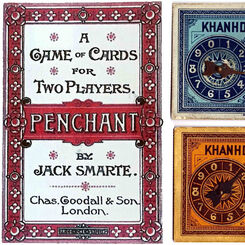
The Search for New Games in the late 19th century
A few new games survived and are still around today; most came and went and are only witnessed in th...
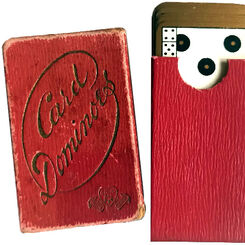
Miniature Card Dominoes
A miniature set of Goodall domino cards (5.9 x 3.5 cms) still in perfect condition.
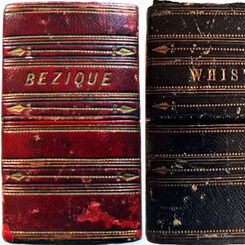
T. Drayton & Son
Bezique and Whist boxed sets by T. Drayton & Son, London, c.1875.
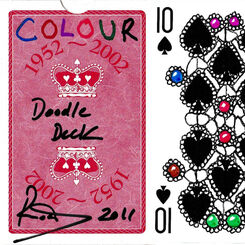
Colour doodle deck
“1952-2002 commemorative deck” customised with doodles by an uncredited artist, UK, 2011.
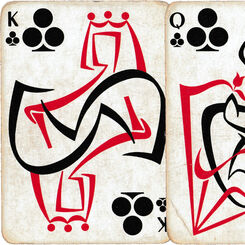
Jeu Boléro
Sweeping, semi-abstract designs by J.L. Jolin in red and black only.
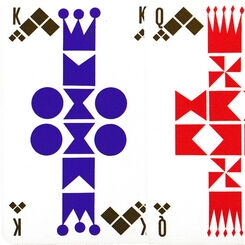
Knoll International
Geometric designs by the French artist Jean Garçon for Knoll International, the furniture company.
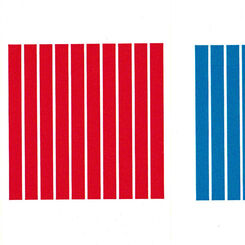
Marcello Morandini
Modern designs by Italian artist Marcello Morandini using the simplest of forms and colours.
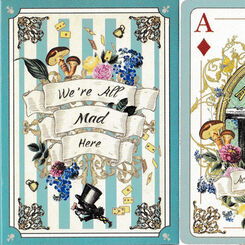
Alice in Wonderland: we’re all mad here
Alice in Wonderland themed playing cards, UK, 2020.
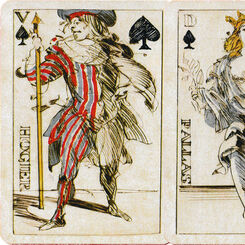
Claude Weisbuch
Free reinterpretation of the traditional Paris pattern courts by the artist Claude Weisbuch.
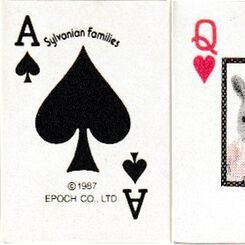
Sylvanian Families mini playing cards
Miniature cards in sheet form with Sylvanian Families characters on the courts and Jokers.
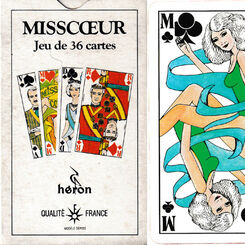
MISSCŒUR
Elongated cards from France with a fourth court card, a Miss.
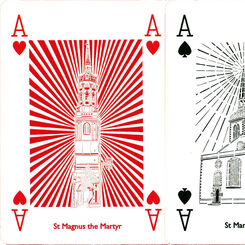
Wren 300 playing cards
Papercuts by Chloe Campbell of the 52 Wren churches in the City of London.
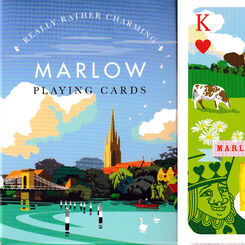
Marlow playing cards
Visitor attractions and businesses to be found in Marlow, Buckinghamshire.
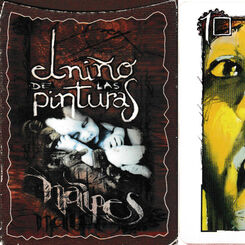
El Niño de las Pinturas
Forty-nine distinctive works by Spanish graffiti artist Raúl Ruiz.

Playing Politics 2010
“Playing Politics ’10: With no expenses spared” featuring caricatures by Oliver Preston, published b...
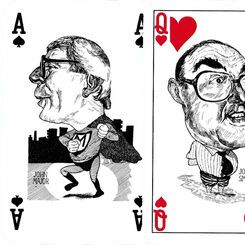
Playing Politics ’92: Pack of lies
Playing Politics ’92: Pack of lies with caricatures by Grant Robertson, UK.


